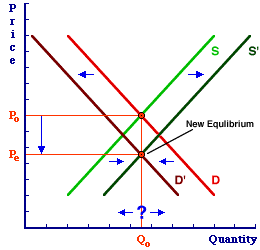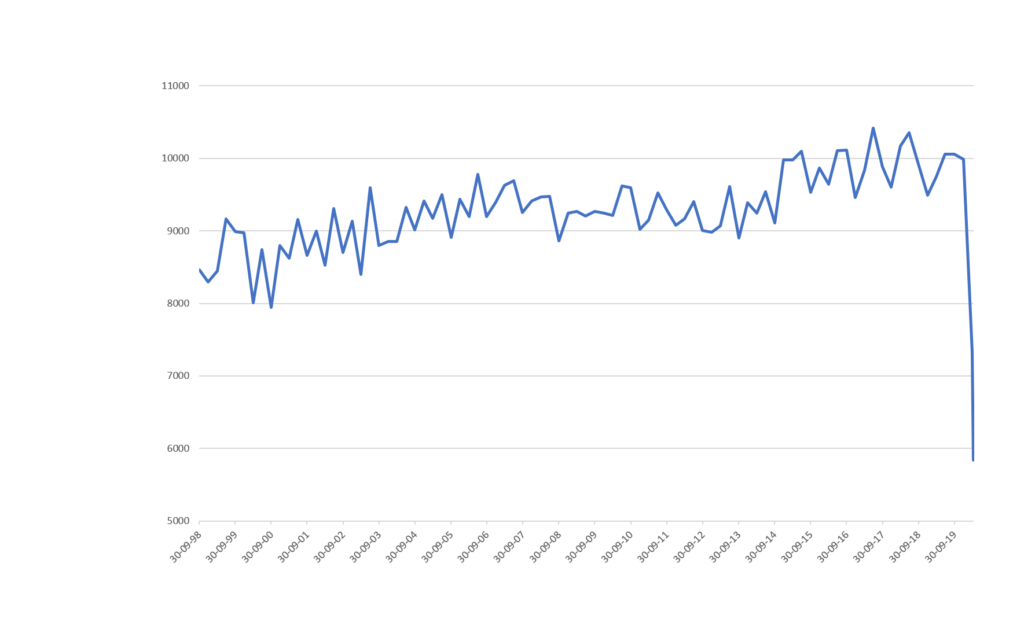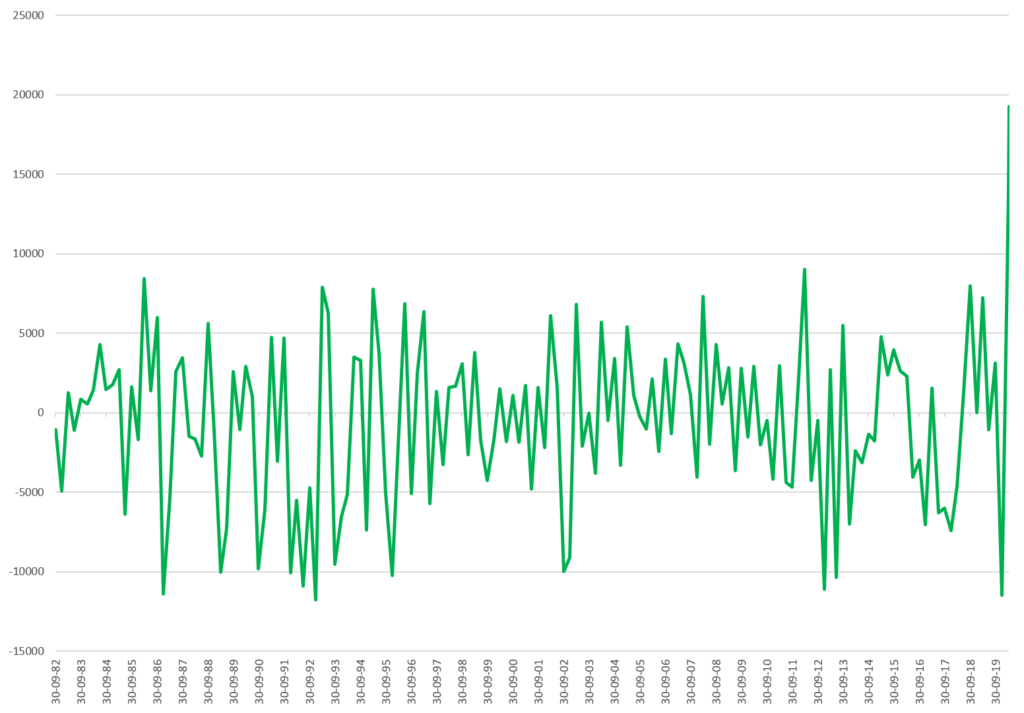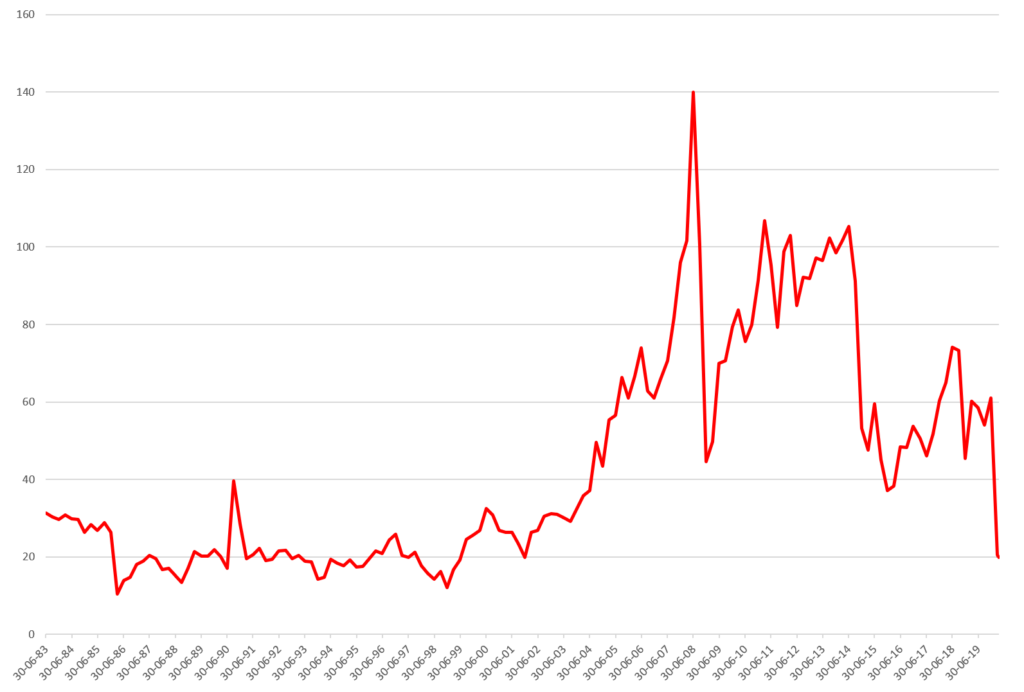Whats Down With Oil?

I have always found that most things in life can be explained by basic economics. Well, some things, for sure. The most basic (THE most basic) concept in economics is the relationship among demand, supply and price. As you will remember from college, price is what adjusts to maintain an equilibrium between demand and supply.
 Source: AmosWeb
Source: AmosWeb
Here’s a graph of the demand for gasoline, each week, from 1998 to present:
US DOE Motor Gasoline Total Output Implied Demand Data, July 1998 – April 2020
 Source: U.S. Department of Energy
Source: U.S. Department of Energy
So demand is way down, around a 50% drop from the beginning of the year. Next, let’s look at supply. Below is the change in crude oil inventories since 1982: by far, a record high increase in inventories:
US DOE Total Change in Crude Oil Inventories, August 1982 – April 2020
 Source: U.S. Department of Energy
Source: U.S. Department of Energy
So, what happens when demand falls and supply rises? (use the first graph above for help).
US Crude Oil WTI Cushing OK Spot Price, May 1983 – April 2020
 Source: Bloomberg Energy
Source: Bloomberg Energy
Exactly! The price falls! Oil began the year at more than $60/barrel, and today is below $20. Which is what happens when demand plummets and supply rises: the price adjusts to the new equilibrium. Economics works!
Our (government’s) reaction to all this was to broker a cut in production among the Saudis, Russians and OPEC+ in hopes of supporting the price of oil. This was a mistake. A much better approach would have been to impose a tax on imported oil and use those proceeds to invest in renewable energy. That would provide near-term support to domestic producers while accelerating the transition to renewables, which can’t be done fast enough. A missed opportunity, but it’s not too late!

